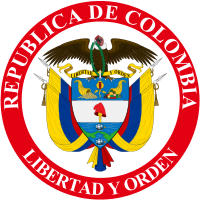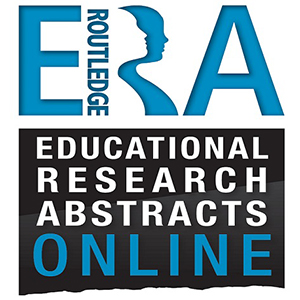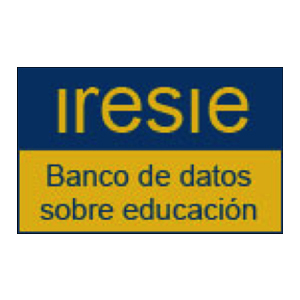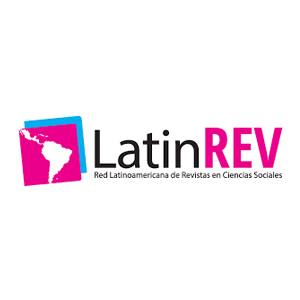La Biodiversidad en el contexto Educativo. Múltiples miradas en el escenario mundial
BIODIVERSITY CONCEPTIONS IN THE EDUCATIONAL CONTEXT. MULTIPLE LOOKS IN THE WORLD STAGE
BIODIVERSIDADE NO CONTEXTO DA EDUCAÇÃO. MÚLTIPLOS OLHARES SOBRE O CENÁRIO MUNDIAL
El presente trabajo explora el campo de la biodiversidad en el contexto educativo. La metodología empleada partió del mapeamiento informacional bibliográfico propuesto por Molina et al., (2012), y el análisis documental descrito por Quintana y Montgomery (2006), con artículos encontrados en seis bases de datos. Las categorías de análisis fueron: Concepciones, Pérdida, Educación Ambiental, Educación para el desarrollo sostenible, Estrategias de Enseñanza-aprendizaje, Reconexión y Diversidad Biocultural. Para terminar, se concluye señalando la riqueza de temáticas a nivel mundial y cómo ésta tiene la posibilidad de realizar aportes en la formulación de agendas de investigación en un tema que, como este, es relevante y estratégico para el país.
Concepciones de biodiversidad, contexto educativo, mapeamiento informacional bibliográfico, análisis documental (es)
Concepções de biodiversidade, o contexto educacional, o mapeamento da literatura informativa, análise documental (pt)
Andreev, N. (2006). The Influence of Cooperative Learning on student conceptual understanding in a course on biodiversity and sustainable development. Central European University. Curriculum Resource center, Working Papers on Teaching and Learning. Obtenido desde http://web.ceu.hu/crc/publication/Andreev_2006.pdf
Ballouard, J. M. (2007). Especes Charismatiques, Especes Locales Et Serpents En Education A L’environnement Evaluation Sur Dix Pays De La Perception Des Enfants À Protéger La Faune Et Importance De L’expérience De Terrain. Poitiers: Universite De Poitiers. Faculté Des Sciences Fondamentales et Appliquées.
Ballouard, J. M., Brischoux, F., y Bonnet, X. (2011). Children Prioritize Virtual Exotic Biodiversity over Local Biodiversity. PLoS ONE, 6 (8).
Baptista, G., y El-Hani, Ch. (2009). The Contribution of Ethnobiology to the Construction of a Dialogue Between Ways of Knowing: A Case Study in a Brazilian Public High School. Science & Education, 18, 503-520.
Begossi, A., Hanazaki, N., y Tamashiro, J. (2002-Septiembre). Medicinal Plants in the Atlantic Forest (Brazil): Knowledge, Use, and Conservation. Human Ecology. Vol. 30, No. 3.
Bermúdez, G., y De Longhi, A. (2012). Análisis de la transposición didáctica del concepto de biodiversidad. Orientaciones para su enseñanza. Algunas aproximaciones a la investigación en
educación en enseñanza de las Ciencias Naturales en América Latina. Bogotá: Universidad Distrital Francisco José de Caldas.
Bizerril, M. (2004). Children’s Perceptions of Brazilian Cerrado Landscapes and Biodiversity. The Journal of Environmental Education, 35 (4), 47-58.
Bizerril, M., Louzada, D., Rocha, D., Peres, J., y Furoni, G. (2007). Percepção de alunos de ensino fundamental sobre a biodiversidade: relações entre nomes de organismos, mídia e periculosidade.
Braun, M., Buyer, R., Randler, C. (2008). Cognitive and emotional evaluation of two educational outdoor programs dealing with non-native bird species. International Journal of Environmental & Science Education. 3 (3), 151-168.
Buijs, A. E., Fischer, A., Rink, D., y Young, J. C. (2008). Looking beyond superficial knowledge gaps: Understanding public representations of biodiversity. International Journal of Biodiversity Science and Management, 4, 65-80.
Collins, F. M. (2012). Biodiversity and Education for Sustainable Development in Teacher Education Programmes of Four Jamaican Educational Institutions. Journal of Education for Sustainable Development, 6 (2), 253-267.
Convention of Biological Diversity (s.f.). COP 6 Decision VI/26. Strategic plan for the CBD. Obtenido desde http://www.cbd.int/decision/cop/?id=7200
Dalelo, A. (2012). Loss of biodiversity and climate change as presented in biology curricula for Ethiopian schools: Implications for action-oriented environmental education. International Journal of Environmental & Science, 7 (4), 619-638.
De la Fuente de Val, G. J., Atauri, M. J., y De Lucio Fernández, J. V. (2004). El aprecio por el paisaje y su utilidad en la conservación de los paisajes de Chile Central. Ecosistemas, 13 (2), 82-89.
Dikmenli, M. (2010). Biology student teachers’ conceptual frameworks regarding biodiversity. Education, 130 (3), 479-489.
Eldredge N. (2001). La vida en la cuerda floja. La humanidad y la crisis de la Biodiversidad. Barcelona: Tusquets.
Ehrlich, P. R., y Pringle, R. M. (2008). Where does biodiversity go from here? A grim business-as-usual forecast and a hopefulportfolio of partial solutions. The national academy of Sciences, 105 (1), 11579-11586.
Escobar, A. (1999). Whose Knowledge, Whose Nature? Biodiversity Conservation and Social Movements’ Political Ecology, Journal of Political Ecology.
Fen Yen, C., Wei Yao, T., y Chih Chiu, Y. (2004). Alternative Conceptions in Animal Classification Focusing On Amphibians and Reptiles: A Cross-Age Study. International Journal of Science and Mathematics Education, 2, 159-174.
Fernández, J. E. (2000). Conservation Education: The Need for Regional Approaches Supporting Local Initiatives. Wildlife Society Bulletin, 28 (1), 164-167. Obtenido desde http://www.jstor.org/stable/4617299
Fiebelkorn, F., y Menzel, S. (2012). Student Teachers’ Understanding of the Terminology, Distribution, and Loss of Biodiversity: Perspectives from a Biodiversity Hotspot and an Industrialized Country. Res Sci Educ.
García, G. J., y Martínez B., F. (2010). Cómo y qué enseñar de la biodiversidad en la alfabetización científica. Enseñanza de las ciencias, 28 (2), 175-184.
González, G. F., y Contreras, F. D. (2009). El Concepto de Diversidad Vegetal desde la Etnia Mapuche a la Enseñanza Formal en Chile. Enseñanza de las ciencias. Número Extra VIII Congreso Internacional sobre Investigación en Didáctica de las Ciencias. Barcelona, 389-439.
Helldén, G., y Helldén, S. (2008). Students’ early experiences of biodiversity and education for a sustainable future. Nordic Studies in Science Education, 4 (2), 123-131.
Hunter, M. L., y Brehm, J. (2003). Qualitative Insight into Public Knowledge of, and Concern With, Biodiversity. Human Ecology, 31 (2), 309-32.
Hyseni, M. (2008). Perception Of and Attitudes towards Biodiversity by Experts and Laypersons in Kosovo- A Key to Conservation.
Jimmy, T. M. (2006). Science teachers and coastal dwellers perceptions on mangrove biodiversity conservation. Journal of Science Education, 7 (1), 24-30.
Kanno, K., Hidaka, T., Kaneko, T., Kawazumi, H., y Karube, M. (2011). The Partnership between a University and 5 Schools for Wise Use of Biodiversity. Journal of Sustainable Development, 4 (3), 94-100.
Kelemen, E., Balázs, K., Choisis, J. P., Choisis, N., Gomiero, T., Kovács, E., y Sarthou, J. (2011). Competing perceptions on biodiversity and its benefits: theoretical and methodological implications of a focus group study. Trabajo presentado en la 9th International Conference of the ESEE, Istanbul.
Keller, H. W. (2004). Tree Canopy Biodiversity: Student Research Experiences in Great Smoky Mountains National Park. Systematics and Geography of Plants, 74, (1), 47-65. Obtenido desde http://www.jstor.org/stable/3668557
Kieninger, P., Holzner, W., y Kriechbaum, M. (2009). Biocultural Diversity and Satoyama. Emotions and the fun-factor in nature conservation. A lesson from Japan. Die Bodenkultur. 60, (1), 15-21.
Kilinc, A.,Yeşiltaş, K. N., Kartal, T., Demiral, Ü., y Eroğlu, B. (2013). School Students’ Conceptions about Biodiversity Loss: Definitions, Reasons, Results and Solutions. Res Sci Educ.
Kobori, H. (2009). Current trends in conservation education in Japan. Biological conservation, 142, 1950-1957.
Köhler, A. (1999). Pigmeos, primates y elefantes: percepciones populares en Occidente y actitudes locales hacia la fauna y el medio ambiente selvático. Estudios de Asia y Africa, 34, (2), (109), 259-294. Obtenido desde http://www.jstor.org/stable/40313325
Kvist, S. (2011). Teaching Biodiversity & Evolutionary Biology in a North American Marine Coastal Environment. The American Biology Teacher, 73 (2), 72-77.
Leff, E. (2006). Aventuras de la epistemología ambiental. De la articulación de ciencias al diálogo de saberes. México: Siglo XXI Editores
Lindemann, M. P., y Bose, E. (2008). How Many Species Are There? Public Understanding and Awareness of Biodiversity in Switzerland. Hum Ecol, 36, 731-742.
Lindemann, M. P. (2002). The influence of an educational program on children’s perception of biodiversity. The Journal of Environmental Education, 33 (2).
Lindemann, M. P., Constantinoub, C., Lehnertd, H. J., Nagele, U., Raperf, G., y Beltran, K. C. (2011). Confidence and Perceived Competence of Preservice Teachers to Implement Biodiversity Education in Primary Schools-Four comparative case studies from Europe. International Journal of Science Education, 1-27.
Lindemann, M. P., y Hyseni, M. (2009). Perception and Knowledge of Environmental Issues, in Particular Biodiversity by Stakeholders and Laypersons in Kosovo -A Case Study. Journal of International Environmental Application and Science, 4 (4), 413-427.
Lindemann, P. M. (2009). Ästhetische Wertschätzung der landwirtschaftlichen Kulturen durch die Bevölkerung im schweizerischen Mittelland. Zürich: Universität Zürich.
Lindemann, P. M., Junge, X., y Matthies, D. (2010). The influence of plant diversity on people’s perception and aesthetic appreciation of grassland vegetation. Biological.
Martínez, B. F., y García, G. J. (2009). Análisis del tratamiento didáctico de la biodiversidad en los libros de texto de Biología y Geología en Secundaria. Didáctica de las Ciencias Experimentales y Sociales, 23, 109-122.
McCarter, J., y Gavin, C. (2011). Perceptions of the value of traditional ecological knowledge to formal school curricula: opportunities and challenges from Malekula Island, Vanuatu. Journal of ethnobiology and ethnomedicine, 7 (38), 1-14.
McCoy, M. W., McCoy, K. A., y Levey, D. J. (2007). Teaching biodiversity to students in inner city & under-resourced schools. The American Biology Teacher, 69 (8), 473-476.
McLaughlin, J., y. Kent, J. (2006). Assessing the Field Course Experiential Learning Model:Transforming Collegiate Short-term Study Abroad Experiences into Rich Learning Environments. The Interdisciplinary Journal of Study Abroad, 65-85.
Menzel, S., y Bögeholz, S. (2009). The Loss of Biodiversity as a Challenge for Sustainable Development: How Do Pupils in Chile and Germany Perceive Resource Dilemmas? Res Sci Educ, 39, 429-447.
Menzel, S., y Bögeholz, S. (2010). Values, beliefs and norms that foster Chilean and German pupils’ commitment to protect biodiversity. International Journal of Environmental & Science Education, 5 (1), 31-49.
Miller, J. R. (2005). Restauración, reconciliación y volver a conectar con naturaleza cercana. Ames: Departamento de Ecología y Gestión de Recursos Naturales, Departamento de Arquitectura del Paisaje, Universidad del Estado de Iowa.
Molina, A., Pérez, M., Castaño, N., Bustos, E., Suárez, O., y Sánchez, M. (2012- Diciembre). Mapeamiento informacional bibliográfico en el campo de la enseñanza de las ciencias, contexto y diversidad cultural: el caso del journal cultural studies in science education (csse). Revista EDUCyT, Volumen Extra, 197-222.
Moore A. S., Wallington, J. T., Hobbs J. R., Ehrlich R. P., Holling S. C., Levin, S., y Westoby, M. (2009). Diversity in Current Ecological Thinking: Implications for Environmental Management. Environmental Management, 43, 17-27.
Okur, E., Yalcin-Özdilek, S., y Sahín, Ç. (2011). The Common Methods used in Biodiversity Education by primary school Teachers (Canakkale-TURKEY). Journal of Theory and practice in Education, 7 (1), 142-159. Obtenido desde http://eku.comu.edu.tr/index/7/1/eokur_syozdilek_csahin.pdf
Özsoy, U. (2010). Öğretmen Adaylarının Biyolojik Çeşitlilik Kavramına Yönelik Görüşleri. Biyoloji Bilimleri Araştırma Dergisi, 3 (1), 93-99.
Pardo, E., y Achahui, R. (2004). Redescubriendo las raíces culturales: los niños y la biodiversidad en los Andes. Leisa Magazine, 18-20.
Quintana, A., y Montgomery, W. (2006). Psicología: Tópicos de actualidad. Lima: UNMSM, 282.
Ramadoss, A., y Poyya, M. G. (2011). Biodiversity Conservation through Environmental Education for Sustainable Development- A Case Study from Puducherry, India. International Electronic Journal of Environmental Education 1 (2), 97-111.
Randler, C. (2008). Teaching Species Identification- A Prerequisite for Learning Biodiversity and Understanding Ecology. Eurasia Journal of Mathematics, Science & Technology Education, 4 (3), 223-231.
APA
ACM
ACS
ABNT
Chicago
Harvard
IEEE
MLA
Turabian
Vancouver
Descargar cita
Citaciones

1. María Emilia Ottogalli, Gonzalo Miguel Ángel Bermudez. (2022). Estrategias de enseñanza de la biodiversidad durante la formación inicial y continua del profesorado: Una revisión bibliográfica en clave latinoamericana. Bio-grafía, 16(30) https://doi.org/10.17227/bio-grafia.vol.16.num30-17824.
2. GONZALO MIGUEL ANGEL BERMUDEZ, LÍA PATRICIA GARCÍA, KAREN GIMENA CISNERO. (2020). DIDÁCTICA DE LAS CIENCIAS PARA UNA CIUDADANÍA CRÍTICA. REFLEXIONES Y PRÁCTICAS CONTEXTUALIZADAS PARA PROBLEMÁTICAS DE AMBIENTE Y SALUD. Ensaio Pesquisa em Educação em Ciências (Belo Horizonte), 22 https://doi.org/10.1590/21172020210132.
Métricas PlumX
Visitas
Descargas
Licencia
Derechos de autor 2013 Nodos y Nudos

Esta obra está bajo una licencia internacional Creative Commons Atribución-NoComercial 4.0.
Todo el trabajo debe ser original e inédito. La presentación de un artículo para publicación implica que el autor ha dado su consentimiento para que el artículo se reproduzca en cualquier momento y en cualquier forma que la revista Nodos y Nudos considere apropiada. Los artículos son responsabilidad exclusiva de los autores y no necesariamente representan la opinión de la revista, ni de su editor. La recepción de un artículo no implicará ningún compromiso de la revista Nodos y Nudos para su publicación. Sin embargo, de ser aceptado los autores cederán sus derechos patrimoniales a la Universidad Pedagógica Nacional para los fines pertinentes de reproducción, edición, distribución, exhibición y comunicación en Colombia y fuera de este país por medios impresos, electrónicos, CD ROM, Internet o cualquier otro medio conocido o por conocer. Los asuntos legales que puedan surgir luego de la publicación de los materiales en la revista son responsabilidad total de los autores. Cualquier artículo de esta revista se puede usar y citar siempre que se haga referencia a él correctamente.












